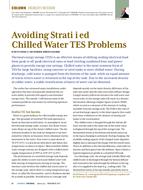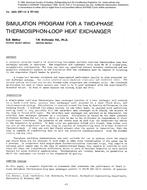Two, primary methods for calculating space and/or building thermal loads and temperatures currently being used by public domain energy analysis computer programs are the thermal balance approach and the weighting factor approach. For example, program BLASTS employs the solution of thermal balance equations, in which the heat gain at any one surface within a zone due to conduction is balanced by the convective heat transfer between the surface and the room, as well as the radiant heat gain due to emission from other sources. On the other hand, program DOE-27 was designed to determine the zone thermal load by explicit solution of surface fluxes and room temperatures through independent calculation of each component of heat gain. The contribution of each component to the total load was then adjusted by a set of tabulated, average weighting factors corresponding to construction weight.
Both of these techniques – thermal balance and weighting factor – calculate thermal loads in an approximate manner, each possessing inherent algorithmic assumptions which render it insensitive to some key aspects of accurate building energy analysis. Important among these is that of the thermal coupling of zones and the systems serving them.
The particular choice of the thermal balance or the weighting factor technique also determines the coupling method employed for the thermal load and system performance calculations. For example, in the implementation of the thermal balance technique, the availability of heating or cooling and the capacity of the system serving the spaces need to be known when the controlling thermostat equation is included in the load calculations. However, if the assumed capacities are not correct, no mechanism is available to correct this in the system simulation. This is the case in BLAST. In DOE-2, the zone to zone coupling is exact for non-delayed walls in the loads section since constant space temperatures are used, and the zone/system coupling is obtained by generating temperature weights. However, the zone to zone coupling in the systems section is approximate, since past hours’ temperatures are,used to avoid a simultaneous type solution. In both implementations, if zone-to-zone and zone-to-system couplings are strong, the results obtained are very likely not reliable enough to evaluate design alternatives. Passive solar systems which depend on extensive use of interzone heat transfer and use of natural or forced ventilation to control zone comfort are prime examples of just such a strong coupling.
Product Details
- Published:
- 1981
- Number of Pages:
- 6
- File Size:
- 1 file , 350 KB
- Product Code(s):
- D-CI-81-03-1
- Note:
- This product is unavailable in Russia, Belarus


